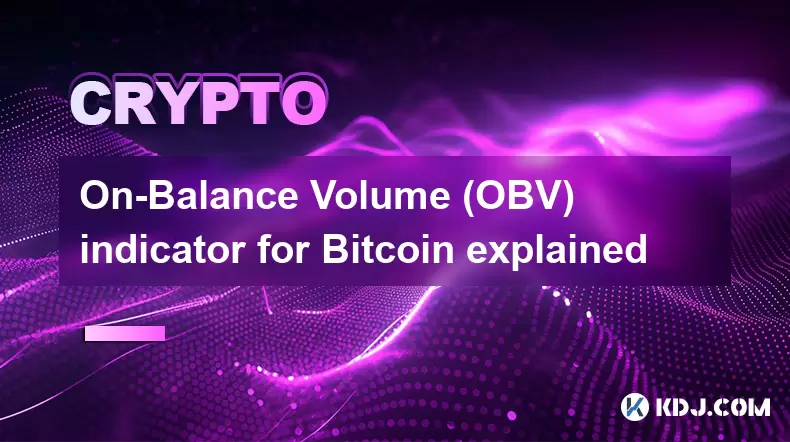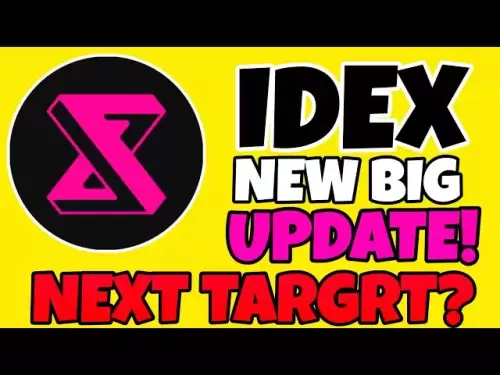-
 Bitcoin
Bitcoin $117,991.5647
-0.03% -
 Ethereum
Ethereum $2,966.4808
0.18% -
 XRP
XRP $2.8076
0.64% -
 Tether USDt
Tether USDt $1.0003
0.00% -
 BNB
BNB $689.9050
-0.63% -
 Solana
Solana $162.0407
-0.80% -
 USDC
USDC $0.9999
0.00% -
 Dogecoin
Dogecoin $0.1995
-1.51% -
 TRON
TRON $0.3001
-1.21% -
 Cardano
Cardano $0.7426
3.25% -
 Hyperliquid
Hyperliquid $47.7978
2.84% -
 Stellar
Stellar $0.4411
16.52% -
 Sui
Sui $3.4267
0.15% -
 Chainlink
Chainlink $15.3148
0.07% -
 Bitcoin Cash
Bitcoin Cash $506.5880
-1.91% -
 Hedera
Hedera $0.2222
12.41% -
 Avalanche
Avalanche $21.2049
1.67% -
 UNUS SED LEO
UNUS SED LEO $9.0606
-0.19% -
 Shiba Inu
Shiba Inu $0.0...01325
-0.86% -
 Toncoin
Toncoin $2.9979
0.32% -
 Litecoin
Litecoin $94.3717
1.13% -
 Polkadot
Polkadot $3.9873
-0.29% -
 Monero
Monero $336.1497
0.92% -
 Dai
Dai $0.9999
-0.01% -
 Uniswap
Uniswap $8.5189
-0.60% -
 Ethena USDe
Ethena USDe $1.0005
-0.04% -
 Pepe
Pepe $0.0...01236
-0.92% -
 Bitget Token
Bitget Token $4.4002
-0.23% -
 Aave
Aave $303.5433
1.05% -
 Bittensor
Bittensor $391.1314
-0.35%
On-Balance Volume (OBV) indicator for Bitcoin explained
The On-Balance Volume (OBV) indicator helps Bitcoin traders gauge buying and selling pressure by tracking volume flow, often signaling trend reversals or confirmations.
Jul 12, 2025 at 07:56 pm

What is the On-Balance Volume (OBV) Indicator?
The On-Balance Volume (OBV) indicator is a technical analysis tool used to measure positive and negative volume flow of an asset. Originally developed by Joseph Granville in the 1960s, OBV has found renewed relevance in cryptocurrency markets, especially for assets like Bitcoin. The core principle behind OBV is that volume often precedes price movement. In the context of Bitcoin trading, this means changes in OBV can signal potential shifts in market sentiment before they are reflected in price.
OBV works by adding the day’s volume to a cumulative total when the closing price rises and subtracting it when the closing price falls. This creates a running total that reflects buying and selling pressure over time.
How Does OBV Work with Bitcoin?
In the volatile world of Bitcoin, where large price swings are common, OBV helps traders interpret whether institutional or retail investors are accumulating or distributing the asset. When Bitcoin’s price is rising and OBV is also increasing, it confirms the uptrend. Conversely, if the price is rising but OBV is flat or declining, it may indicate a lack of conviction among buyers, potentially signaling a reversal.
- If today's close > yesterday's close: add today's volume to previous OBV.
- If today's close < yesterday's close: subtract today's volume from previous OBV.
- If today's close == yesterday's close: OBV remains unchanged.
This calculation forms a line that oscillates above and below a zero baseline, allowing traders to visualize momentum shifts.
Interpreting OBV Signals in Bitcoin Trading
Traders use several key signals derived from the OBV line to make informed decisions about Bitcoin positions. One of the most important is divergence — when the OBV trend doesn’t align with the price trend. For instance:
- A rising price with a falling OBV suggests weakening demand.
- A falling price with a rising OBV indicates hidden strength in buying pressure.
Another key signal is the breakout confirmation. When Bitcoin breaks out of a consolidation pattern and OBV surges upward, it validates the breakout as genuine. Traders often combine OBV with other tools like moving averages or RSI to filter false signals.
Using OBV in Conjunction with Other Indicators
While OBV provides valuable insights into volume dynamics, it should not be used in isolation. Combining OBV with other indicators enhances its predictive power in Bitcoin trading. Here’s how some traders layer these tools:
- Moving Averages: A bullish crossover on a 50-day and 200-day moving average combined with rising OBV can confirm a strong trend.
- RSI (Relative Strength Index): If RSI shows overbought conditions but OBV continues to climb, it might suggest continued strength rather than an imminent pullback.
- MACD (Moving Average Convergence Divergence): A MACD buy signal accompanied by a rising OBV line reinforces the likelihood of a successful trade setup.
These combinations help filter noise and reduce the risk of entering trades based solely on misleading volume spikes.
Practical Steps to Apply OBV to Bitcoin Charts
To apply the OBV indicator to Bitcoin charts, follow these detailed steps:
- Open your preferred trading platform (e.g., TradingView, Binance, or CoinMarketCap).
- Navigate to the chart section and select the Bitcoin pair you wish to analyze (e.g., BTC/USDT).
- Look for the "Indicators" button or search bar within the chart interface.
- Type “On-Balance Volume” or simply “OBV” in the search field.
- Click to add the indicator to your chart.
- Adjust settings if necessary (most platforms default to standard OBV parameters).
- Observe how the OBV line interacts with price action.
Once applied, closely monitor divergences and trendline breaks. Many platforms allow drawing trendlines directly on the OBV sub-chart, enabling better visualization of support and resistance levels in volume terms.
Common Misconceptions About OBV and Bitcoin
Despite its utility, there are misconceptions surrounding the OBV indicator when applied to Bitcoin:
- Some believe OBV predicts exact price points — it does not; it measures momentum and sentiment.
- Others assume high volume always equates to a bullish outcome — however, high volume during a sharp drop can indicate panic selling.
- There is also a belief that OBV works equally well across all timeframes — while it can be applied to any timeframe, it tends to be more reliable on daily or weekly charts due to reduced noise.
Understanding these nuances ensures more effective application of OBV in real-world Bitcoin trading scenarios.
Frequently Asked Questions (FAQ)
Q: Can OBV be used effectively on shorter timeframes like 1-hour or 15-minute Bitcoin charts?
A: While technically possible, OBV becomes less reliable on very short timeframes due to increased volatility and erratic volume patterns. It’s generally more effective on daily or weekly charts where trends are clearer.
Q: How does OBV differ from other volume-based indicators like Chaikin Money Flow?
A: Unlike Chaikin Money Flow, which considers both price and volume over a set period, OBV focuses purely on the direction of price change relative to volume. This makes OBV simpler but potentially less nuanced in assessing accumulation or distribution phases.
Q: Is OBV suitable for altcoins as well as Bitcoin?
A: Yes, OBV can be applied to any cryptocurrency. However, due to lower liquidity and higher volatility in many altcoins, interpreting OBV signals requires extra caution compared to Bitcoin.
Q: What should I do if OBV gives conflicting signals with price?
A: Conflicting signals often point to market indecision. It’s advisable to wait for confirmation from other indicators or fundamental developments before making a trade decision.
Disclaimer:info@kdj.com
The information provided is not trading advice. kdj.com does not assume any responsibility for any investments made based on the information provided in this article. Cryptocurrencies are highly volatile and it is highly recommended that you invest with caution after thorough research!
If you believe that the content used on this website infringes your copyright, please contact us immediately (info@kdj.com) and we will delete it promptly.
- Bitcoin's Weekend Breakout: All-Time Highs and What's Driving the Surge
- 2025-07-14 01:30:14
- Arctic Pablo Coin: The Meme Coin Investment That's Heating Up Crypto
- 2025-07-14 00:30:16
- Kate, Cancer, and Wimbledon: A Royal Display of Strength and Sportsmanship
- 2025-07-14 00:30:16
- Shiba Inu: Riding the 2025-26 Bull Cycle Wave?
- 2025-07-14 00:50:14
- Dogecoin and the Meme Coin Mania: Top 10 Contender or Just Hype?
- 2025-07-14 00:50:14
- Mutuum Finance, Bitcoin, and Stabilization: Decoding the Crypto Landscape
- 2025-07-14 01:30:14
Related knowledge

What is the significance of the 21-week EMA in a Bitcoin bull market?
Jul 10,2025 at 06:56pm
Understanding the 21-Week EMA in Cryptocurrency AnalysisThe 21-week Exponential Moving Average (EMA) is a technical indicator widely used by traders a...

How to identify a volatility contraction pattern on Bitcoin using indicators?
Jul 07,2025 at 07:28am
What is a Volatility Contraction Pattern in Bitcoin Trading?A volatility contraction pattern refers to a phase where the price movement of an asset, s...

Do indicators work better on a logarithmic or linear scale for Bitcoin's long-term chart?
Jul 08,2025 at 01:42pm
Understanding Chart Scales in Cryptocurrency TradingIn cryptocurrency trading, particularly for analyzing Bitcoin's long-term trends, chart scales pla...

What is the Woodies CCI indicator and can it be used for Bitcoin?
Jul 04,2025 at 05:14pm
Understanding the Woodies CCI IndicatorThe Woodies CCI indicator is a variation of the traditional Commodity Channel Index (CCI), which was originally...

How to use indicators to trade the opening range breakout for Bitcoin CME futures?
Jul 05,2025 at 07:35pm
What Is the Opening Range Breakout Strategy?The opening range breakout (ORB) strategy is a popular trading technique used in both traditional markets ...

How to use the Relative Vigor Index (RVI) for Bitcoin trading?
Jul 07,2025 at 02:00pm
Understanding the Relative Vigor Index (RVI)The Relative Vigor Index (RVI) is a technical analysis tool used to assess the strength of price movements...

What is the significance of the 21-week EMA in a Bitcoin bull market?
Jul 10,2025 at 06:56pm
Understanding the 21-Week EMA in Cryptocurrency AnalysisThe 21-week Exponential Moving Average (EMA) is a technical indicator widely used by traders a...

How to identify a volatility contraction pattern on Bitcoin using indicators?
Jul 07,2025 at 07:28am
What is a Volatility Contraction Pattern in Bitcoin Trading?A volatility contraction pattern refers to a phase where the price movement of an asset, s...

Do indicators work better on a logarithmic or linear scale for Bitcoin's long-term chart?
Jul 08,2025 at 01:42pm
Understanding Chart Scales in Cryptocurrency TradingIn cryptocurrency trading, particularly for analyzing Bitcoin's long-term trends, chart scales pla...

What is the Woodies CCI indicator and can it be used for Bitcoin?
Jul 04,2025 at 05:14pm
Understanding the Woodies CCI IndicatorThe Woodies CCI indicator is a variation of the traditional Commodity Channel Index (CCI), which was originally...

How to use indicators to trade the opening range breakout for Bitcoin CME futures?
Jul 05,2025 at 07:35pm
What Is the Opening Range Breakout Strategy?The opening range breakout (ORB) strategy is a popular trading technique used in both traditional markets ...

How to use the Relative Vigor Index (RVI) for Bitcoin trading?
Jul 07,2025 at 02:00pm
Understanding the Relative Vigor Index (RVI)The Relative Vigor Index (RVI) is a technical analysis tool used to assess the strength of price movements...
See all articles























































































